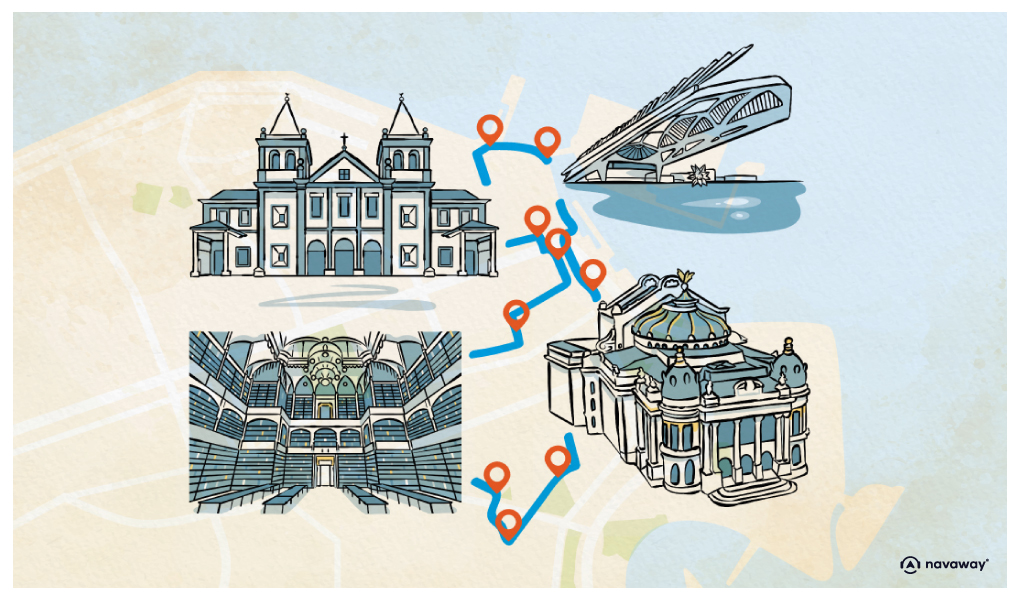
Candelária church

This point of interest is available as audio on the tour: Visit Rio de Janeiro, La Cidade Maravilhosa – The City of Wonders
Introducing the beautiful Baroque Candelária church. Legend has it that, in the 17th century, a ship named Candelaria weathered a big storm at sea and barely made it to shore. Grateful to be alive, the shaken Portuguese sailors built a small chapel around 1609, fulfilling a vow they made during the tempest. They dedicated it to Our Lady of Candelaria. Over time, the little chapel was expanded, renovated, and transformed into the magnificent church you see today. Its façade is a fine example of Portuguese Baroque architecture and, like all colonial churches, it faces Guanabara Bay that was once the main entrance to the city. The altars inside were sculpted by the great Brazilian Rococo artist, Mestre Valentim, back in the 18th century. Then, in the 19th century, the church took on a neo-Renaissance style, and the walls and columns were clad in Italian marble. You’ll also find paintings by João Zeferino da Costa, a painter and professor at the Imperial Academy of Fine Arts. Today, they are considered masterpieces of religious art. They even added more naves and had a special dome built in distant Lisbon! Once it was installed, the Candelaria became the tallest building in the city. It’s one of the most important works of art of 19th-century Brazil, and easily the most beautiful church in all of Rio. Yet it’s also linked to the Candelaria massacre, a tragedy that shook Brazil and the rest of the world. On July 23, 1993, just before midnight, a group of armed men in a car opened fire on homeless people, mostly children and teenagers sleeping near the church. According to Amnesty International, 44 of the 70 homeless people sleeping on the streets in that area that day were violently killed. Most of the victims were black. There is a wooden cross in front of the church bearing the names of the victims, and mosaics on the floor depicting 8 lifeless bodies. The attackers were part of a militia, and many of them were former members of the local military police. They were arrested, and their trials and subsequent heavy sentences were seen as an attempt to put an end to the impunity enjoyed by death squads often formed by police officers or ex-policemen. They have since been released and acquitted.


Discover Rio de Janeiro with app
An interactive guide through the most beautiful streets, squares, and districts
24 fun audioguides full of historical facts, anecdotes, and legends





Comments